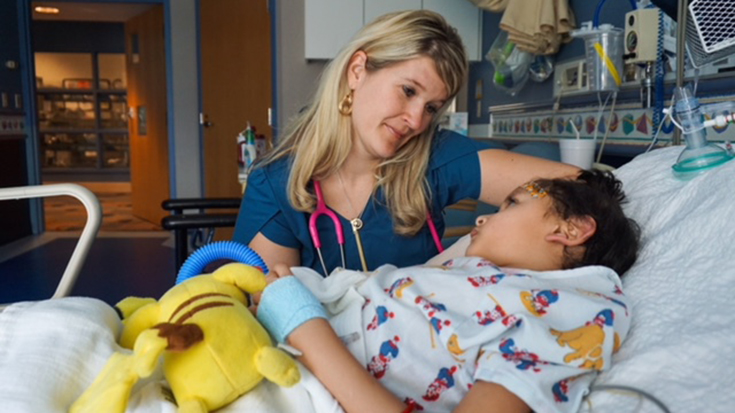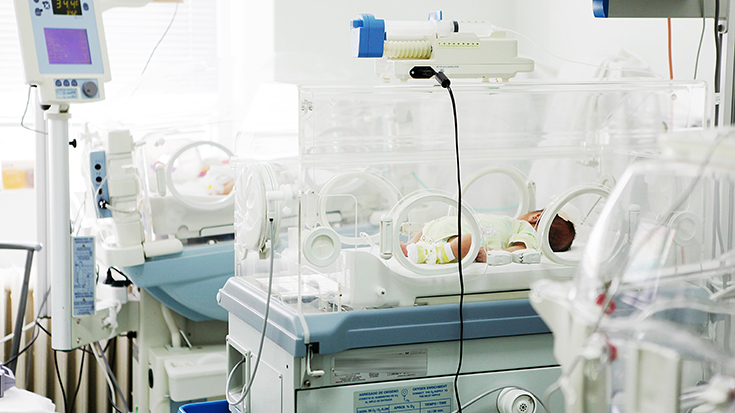
Joe Kiani, founder and CEO of Masimo, had already heard one too many stories about preventable harm occurring in hospitals when he learned of the death of 12-year-old Rory Staunton, who passed away in 2012 after clinicians missed symptoms indicating he could be developing sepsis.
Kiani realized that if the blood lab data had made it into the electronic health record before Rory was discharged, he might very well still be alive and well.
Something needed to be done. He decided he and his company were the ones to do it. That passion resulted in the formation of the Patient Safety Movement Foundation (PSMF), an organization dedicated to working toward zero preventable harm and death in the health care system by the year 2030.
The AARC has been a PSMF partner since the organization’s inception, and continues to work with the PSMF to achieve that goal.
“Patient safety and preventable harm and death should be a priority for everyone in the health professions,” said AARC President Sheri Tooley, BSRT, RRT, RRT-NPS, CPFT, AE-C, FAARC. “ZERO should be our goal every single day.”
How it works
According to Ariana Longley, chief operating officer at the PSMF, Kiani’s mission was to “de-silo the health care ecosystem and particularly get health care technology companies to sign PSMF’s Open Data Pledge so that examples like Rory wouldn’t happen again.” While ZERO is a huge goal, she says the PSMF believes any goal besides zero preventable harm and death is unacceptable because every life matters.
The structure of the PSMF is simple and designed to be cost-effective.
“We built the Patient Safety Movement Foundation on a commitment versus membership model,” Longley said. “This enables us to connect the dots with everyone without there being a cost to individuals or organizations.”
The organization is funded by grants and donations, with hospitals and health care organizations simply agreeing to commit to the ZERO goal and share their achievements in the area. The commitments are shared publically, with the thought being that the more people who know which hospitals and companies are supporting the effort and how the effort will grow.
“Creating an avenue to share this information helps PSMF establish itself as a megaphone to raise awareness on this topic and encourage hospitals and health care organizations to step up and commit to big goals,” Longley said.
The AARC’s role
To date, 93 companies have signed the Open Data Pledge, showing their willingness to share data from their devices and systems, and the organization boasts 105 partners like the AARC that are helping to spread the word about the goal of zero preventable harm and death.
Tooley says the AARC has gotten involved by engaging RTs in education and awareness of past errors and what they can do to prevent them in their clinical setting. The Association has also encouraged the introduction of new technologies and equipment to monitor patients and provide early warning for unsafe conditions and has published evidence-based, peer-reviewed literature on prevention and recognition of safety challenges in all patient populations.
“Promoting awareness of reported errors and empowering everyone on the team to have an equal voice is paramount to recognizing potential harm and correcting it before it reaches the patient,” she said.
The Association also has —
- Worked with the PSMF to aid in developing its Actionable Patient Safety Solutions, including but not limited to: medication errors; health care-associated infections, especially ventilator-associated pneumonia; failure to rescue: opioid-induced respiratory depression; and airway safety.
- Disseminated Actionable Patient Safety Solutions to members.
- Asked members who work in hospitals to implement Actionable Patient Safety Solutions or share their own successful processes with the AARC to eliminate preventable deaths.
- Asked members to make their own commitments to action to the Patient Safety Movement Foundation.
Longley says having organizations like the AARC on board adds immense value to the PSMF.
“We can’t do this individually, or even within a discipline, so it has been great working with AARC to bring respiratory therapists into the fold to help work on solutions to unsafe care together,” she said.
She notes that the AARC has sent RTs to participate in the organization’s global multi-disciplinary workgroups, which are charged with developing Actionable Patient Safety Solution Blueprints. The AARC has also invited patient advocates from the PSMF network to AARC meetings, which has given therapists the chance to hear the patient/family perspective firsthand.
That, she says, humanizes the issue for them and inspires them to work toward needed changes.
Getting the public to step up
Longley says the PSMF is continuing to expand its education efforts, including those related to the Actionable Patient Safety Solutions. It is also ensuring health care facilities can easily take advantage of them by making the coaching free to any hospital that signs on to the ZERO commitment.
“We provide a range of training solutions based on hospital goals, including airway safety,” she said. “By making training accessible to all, we can bridge the gap for rural and critical access hospitals as well as intercity hospitals with vulnerable patient populations.”
Of course, while health care organizations and companies are vital to the success of the PSMF, the organization knows it must engage the general public in the battle to reach zero preventable harm and death by 2030 as well, and it’s working toward that goal too.
“Last year, we hosted the inaugural #uniteforsafecare event and so far have had over 125K views of the program,” Longley said. “This has helped the public understand the role they can play in demanding safe and reliable health care and giving them tools to become empowered patients and advocates for safe care.”
This year, the organization kicked off its Patient Safety Moonshot. This initiative asks people to reach out to their elected officials to demand safe and high-quality care. They specifically hope that people will zero in on three key issues: driving safety data transparency, aligning incentives, and establishing region-appropriate regulatory oversight.
“Anyone can join the Patient Safety Moonshot today, and by signing up, they have access to briefing materials, a guide for how to write to their elected officials, as well as a templated letter,” Longley said.
It takes a village
She encourages RTs to get involved in the Moonshot too.
“Respiratory therapists have the potential to make care safer in the hospital by looking back at the three items under the Patient Safety Moonshot and thinking about how they — personally as well as professionally — can work towards those optimal states,” she said.
Whether it’s writing to an elected official to push patient safety as a priority, helping their friends and family members understand the issue, driving transparency in their hospitals, or helping to reform the payment system and push for accountability, their efforts will be appreciated.
“Everyone has a role to play,” she said.
Sheri Tooley agrees.
“SPEAK UP, be aware of the potential for error, and stay alert,” is her message for her fellow RTs. “Promote education in your facilities to address a safe culture and implement safety protocols.”
Email newsroom@aarc.org with questions or comments, we’d love to hear from you.

















